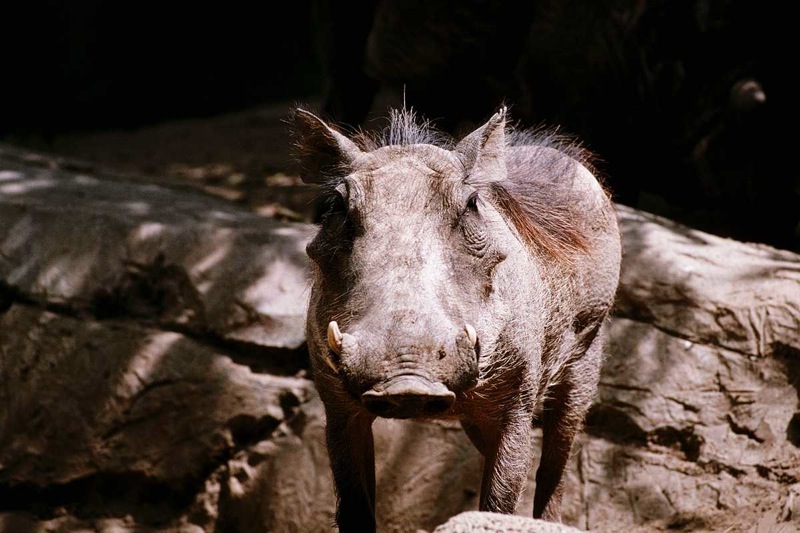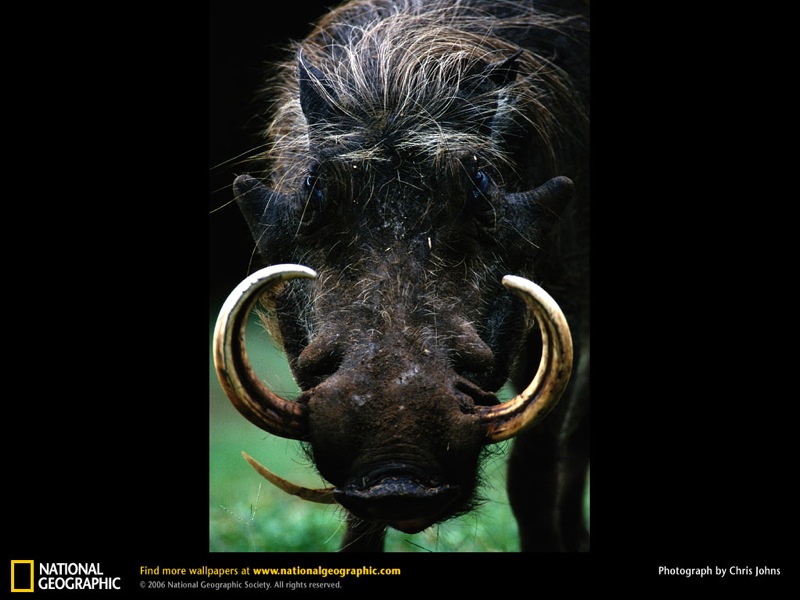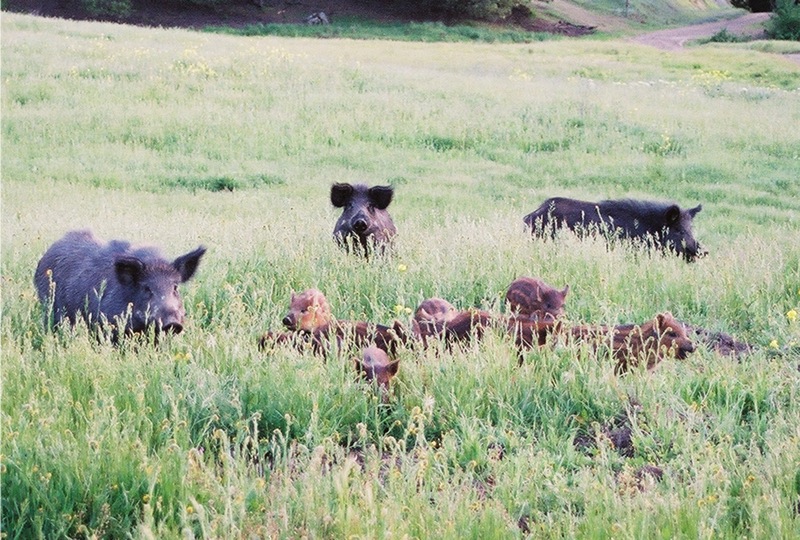Yesterday I competed in the Metropolitan Opera Regional Council Auditions. I think I met my goal of feeling good about the performance; I was so proud as I left the stage! The judges had positive things to say as well. Friends AA and BB were among the prize winners.
Critter News:
Bad Monkey!
Save the Turtles!
Mice and roaches love expensive restaurants!
When I was in elementary school, I was a geek. But there was another girl, perhaps even MORE of a nerd, who called me a name that has scarred me to this day. She called me a "warthog". This was a source of humor for my whole family. So today, let us learn about this creature, and together, decide if I resemble a warthog!
Part of Order Artiodactyla, or even-toed ungulates (along with deer, camels, etc.) warthogs are part of Family Suidae, which includes pigs and hippos. These sub-Saharan pigs are the sole members of the Genus Phacochoerus, although some scientists group them in two species, P. africanus and P. aethiopicus.

Fer cute!
Can you see the four "warts", or protuberances on the warthogs head? These animals range from three to five feet long, 30 inches high and weigh 100 to 330 pounds. The following National Geographic photo clearly shows the two sets of tusks. See how the top tusks curve upward in a half circle? Apparently the lower tusks, which are straight, are the more dangerous of the two sets, as they are polished into razor-sharpness by the upper set. Warthogs use their teeth to dig, as well as protection from predators and to fight each other during mating time.

A group of warthogs is called a sounder! Usually a sounder consists of several sows and their piglets, totaling three to 10 animals. The sounders usually have a range of about 150 to 950 acres, consisting of open areas as well as forested ones. Active in the mornings and evenings, the pigs might travel four miles per day in search of food.
Warthogs enjoy every kind of food, from grasses that they kneel to eat, to carrion, to roots, tubers and rhizomes, fungi, berries and even small animals. While their vision is poor, warthogs use their sense of smell to find food and keen hearing to sense predators.
Enemies of the warthog include humans, lions, leopards, hyenas, crocodiles and cheetahs.
While warthogs will fight to protect themselves, more often than not they will run and hide, as they can't run as fast or as far as other prey animals, such as antelope. Even so, a warthog can run over 30 miles per hour! Warthogs utilize hideyholes, which they dig themselves, or more often steal from aardvarks. The pigs back themselves into the holes, so they can burst outwards with tusks bared for attack!

Warthog nooky takes place at the end of the rainy season (spring). Male sounders will join the groups of females as they're coming into heat. The animals are promiscuous and fights break out amongst the males as they compete for fertile ladies. About 165 days later, at the beginning of the next rainy season, the piglets are born. The momma warthog will kick out her former litter, and line her burrow with grass to keep the babies warm. Usually two to eight piglets are born, but warthogs only have four teats. Each baby clings to the same teat each time he nurses, even if one of the nipples is being unused. Other nursing mothers will accept orphaned babies, however, especially if the mothers are related. The piglets nurse for four months, but get most of their nutrition from grazing by two months.
Like other animals that must survive hot climates, warthogs have adjusted to withstand a higher body temperature. They are the only pigs that can survive without water for several months! Because they are lean and have only bristly hair, warthogs conserve heat and stay cool inside of their burrows.
Aren't warthogs cute!? I like them, and feel less sad about being labeled as one during elementary school than I used to!
A few months ago R and I watched a really cool show about pigs gone wild, here in our very own USA! The thing about domesticated pigs is that they are the same as wild pigs, and quickly grow hair and tusks upon escaping into the wild. The range of these big wild pigs is rapidly growing northward. See, these North Dakota pigs don't look too different from their African warthog cousins!

Except the piglets have those adorable spots and stripes OMG cuteness!
Have a good week!
Warthog Wendell

3 comments:
I LOVE the new blog! Fabulous! I'll change the link on my blog ASAP so everyone can get their favorite critter blogger!
i also love the new blog style! flows very nicely. my gosh, that nerd girl in grade school was crazy nuts! you more so resemble a beautiful opera star!!! way to go:::so pround baby b is of his aunty's strong and most vibrant skills.
Who was the nerd girl? Do I know her? I love the new blog, too. Welcome to blogger!
Post a Comment